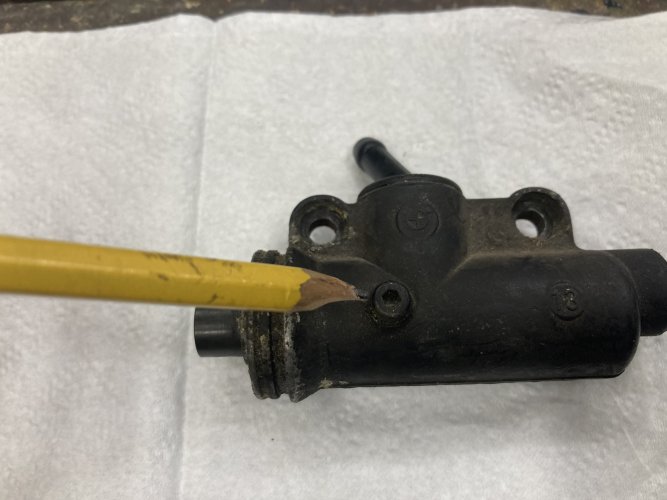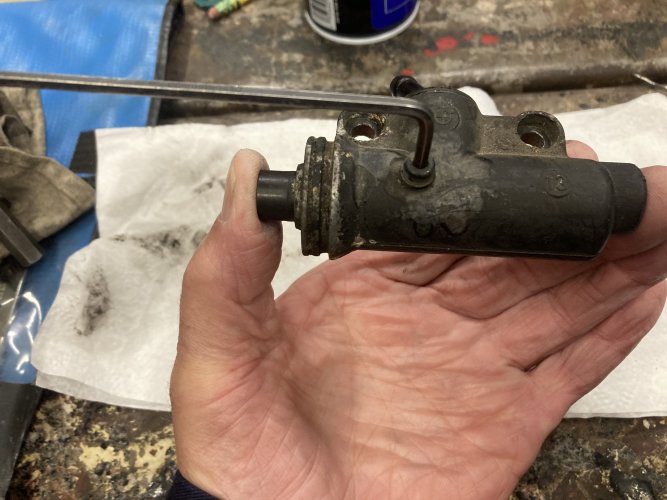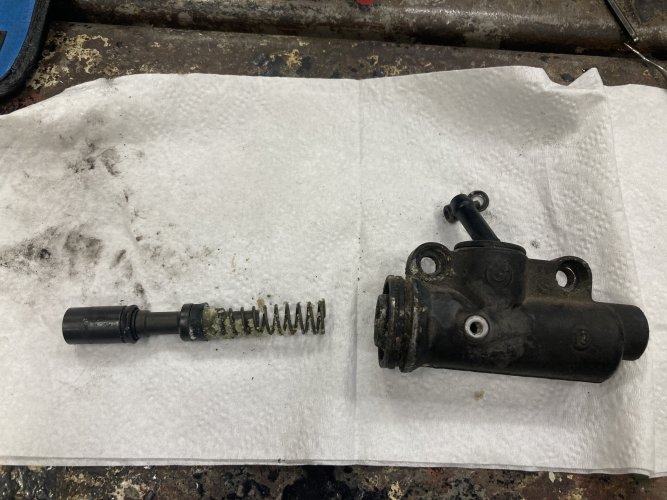rawhites
Member
Bike sat for 30 years....when I went to bleed out & refill the rear brake, I found that the rear master cylinder isn't receiving fluid from the reservoir. The cylinder piston seems to action/work well, driving old fluid out of the bleed nipple. And new fluid can pass through the line down from the reservoir (when detached). But I cannot push new fluid into the system. So it seem there's a blockage internal to the master cylinder....either the receiving nipple is blocked or something else is internally.
I saw other threads about struggles replacing the 13mm Magura (my luck to have the same). No stock on euromotoelectrics or the boneyard.
Two questions:
- Anyone found a source/replacement for these? Whether the 13mm or other sizes that work decently well?
- Anyone have a video on how to do the 13mm rebuild? Happy to do the work, but Haynes is of no help.
Thank you!
I saw other threads about struggles replacing the 13mm Magura (my luck to have the same). No stock on euromotoelectrics or the boneyard.
Two questions:
- Anyone found a source/replacement for these? Whether the 13mm or other sizes that work decently well?
- Anyone have a video on how to do the 13mm rebuild? Happy to do the work, but Haynes is of no help.
Thank you!








